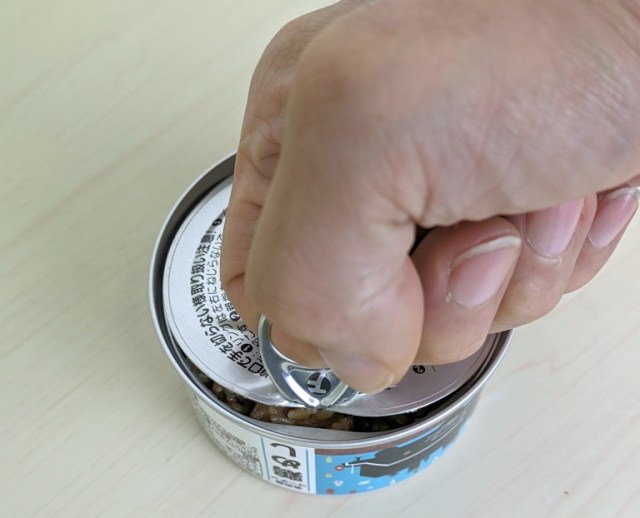
There’s only one station in Japan where you can find these canned versions of famous boxed lunches.
If you’re looking for evidence to support the statement that what makes travel truly special isn’t the destination, but the journey, you’ll find plenty of it in the form of Japan’s ekiben. A contraction of eki bento, meaning “station boxed lunches,” ekiben are pre-packaged meals featuring local delicacies. For foodies, grabbing an ekiben from a station shop and then enjoying it on the train, watching the scenery drift by as you eat, can be as memorable as any sightseeing spot on your itinerary.
Since just about every part of Japan has a special representative ingredient or recipe, there’s a wide variety of different things you’ll find inside different ekiben. The one thing all ekiben have in common, though, is that they’re boxed. So imagine our surprise when we came across…ekiben in cans?!?
▼ 駅弁缶 = ekiben can
We found these inside Tokyo’s Shimabashi Station, at a canned foods specialty shop called Cannederful (Japan will never pass up an opportunity to make a pun), which is the only place they’re available. There’s a certain logic to that, since Shimbashi was the first station on Japan’s very first passenger train line, which opened in 1872 and connected Tokyo with Yokohama, two cities to the south.
▼ “Shimbashi exclusive” says the text on the base of the cans.
However, the inspiration for the contents of the canned ekiben doesn’t come from Tokyo or Yokohama, but rather from two popular station boxed lunches sold further west. One of them is Nagoya Kochin Tori Meshi, a chicken and rice bento sold in Nagoya that uses kochin, a local chicken breed prized for its meaty texture and sweet succulence. The other is Tajima Beef Gyumeshi, a beef and rice ekiben popular in Hyogo Prefecture (the same prefecture as Kobe). Like Nagoya kochin, Tajima beef is known for its delicious and well-balanced flavor.
The canned ekiben sell for 899 yen (US$6) each or 1,799 yen as a set. After taking a moment to appreciate the whimsical steam locomotive illustrations on the labels, our reporter Mr. Sato, who’d drawn taste-test duties, cracked them open, starting with the Nagoya torimeshi.
Ordinarily, a Japanese boxed lunch consists of a main dish, rice, and some sides. In the case of Cannederful’s canned ekiben, though, you just get the main dish and the rice. Still, the visuals immediately got Mr. Sato’s mouth watering, with more chicken than he’d been expecting.
The flavor delivered on the promise made by that delicious appearance, too. For torimeshi, the rice and chicken are cooked together, and this means the subtly sweet notes of the kochin7s flavor profile had seeped into the rice. Add in the bonito and kombu stock seasonings, and it makes for a simple but very satisfying eating experience.
Moving on to the Tajima gyumeshi, this too is a dish where the meat and rice are cooked together. Neither Nagoya kochin nor Tajima beef are particularly cheap, so once again Mr. Sato was pleasantly surprised by how much meat there is.
The flavor is a little fancier here, with sake, mirin (a sweeter sake used only for cooking), and soy sauce moromi (a sort of fermented soy sauce). Still, it’s a delicate mix of flavors, each coaxing your taste buds into noticing them without aggressively demanding their attention.
Though the canned ekiben didn’t deliver the variety you get with an actual boxed lunch, Mr. Sato was more than pleased with both of them. They’re not flashy or decadent, but they both have an old-school, rustic simplicity to them. He could imagine these being the kinds of meals he’d have eaten had he been travelling across the country back in the old days, riding a train like the ones on the cans’ labels, and if a tin of canned food can take you on that sort of imaginative mental journey, it’s a taste trip he’s happy to make.
Related: Cannederful official website
Photos ©SoraNews24
● Want to hear about SoraNews24’s latest articles as soon as they’re published? Follow us on Facebook and Twitter!
[ Read in Japanese ]

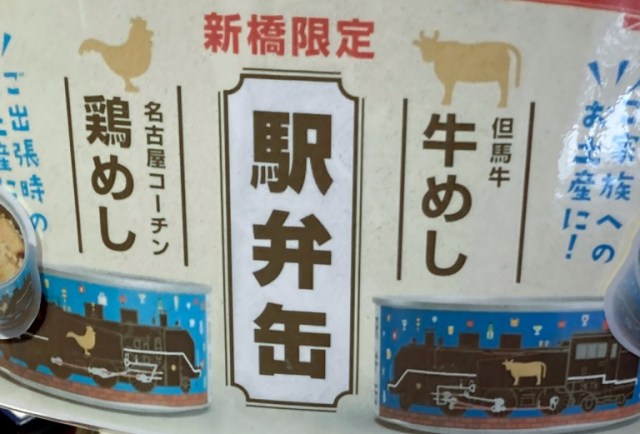
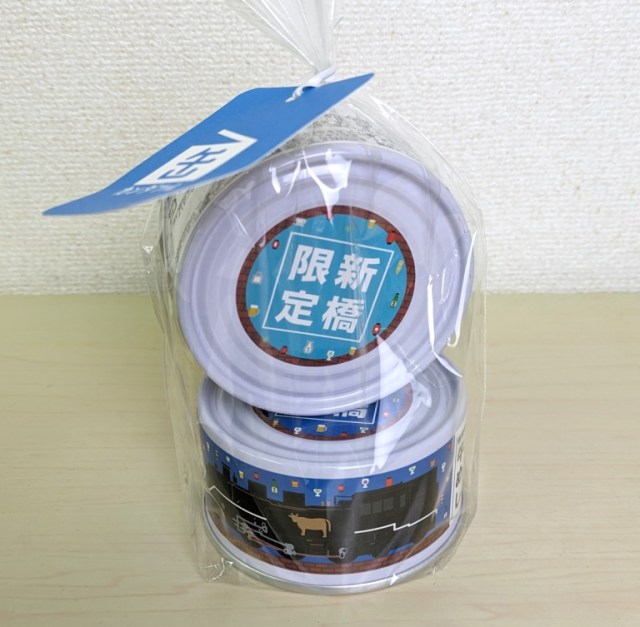
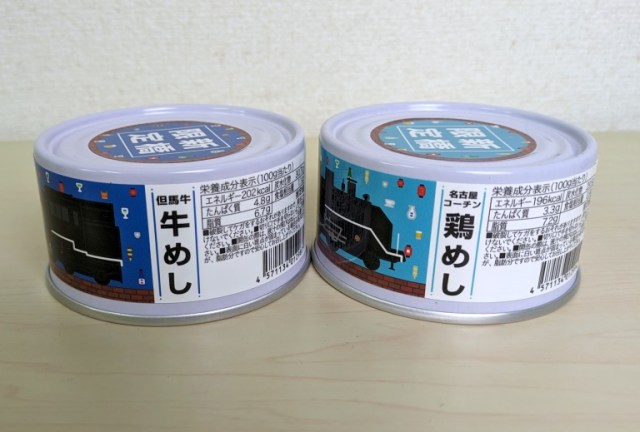

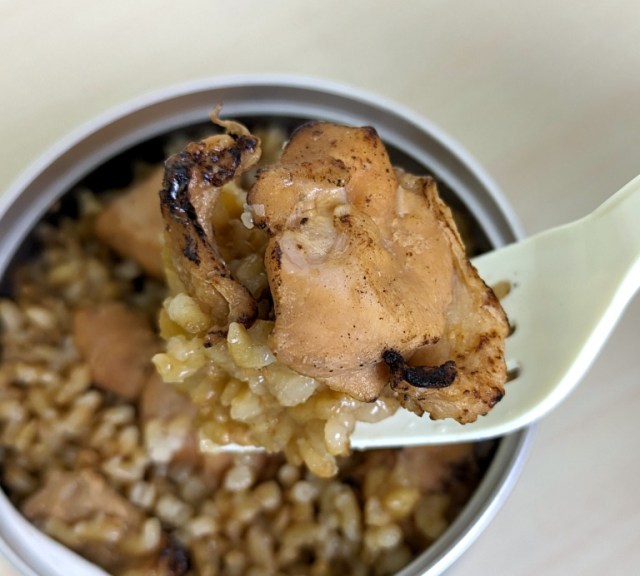
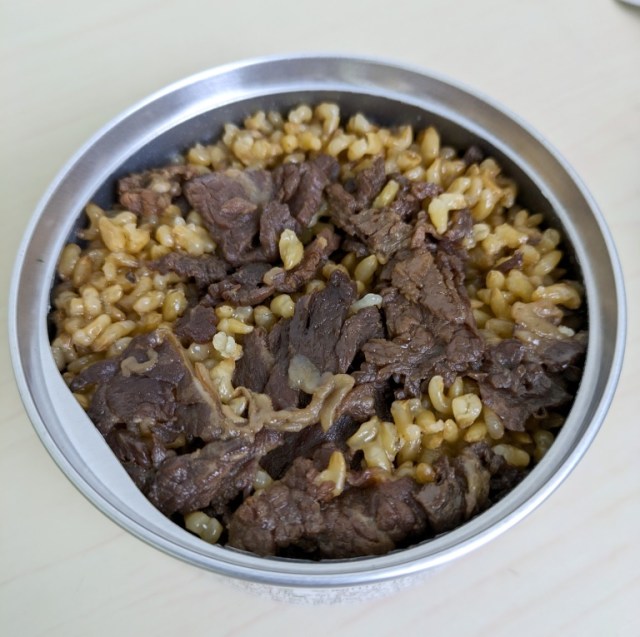
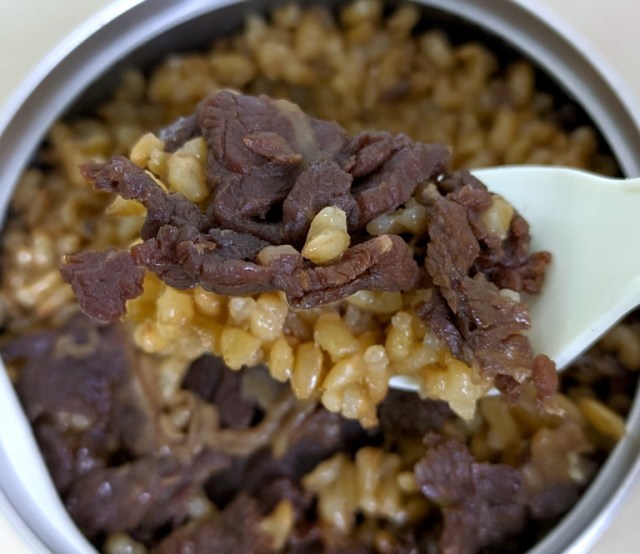
 The five best bento boxed lunches sold at train stations in east Japan
The five best bento boxed lunches sold at train stations in east Japan Japan’s top train station bento boxed lunches for 2016, as picked by travelers
Japan’s top train station bento boxed lunches for 2016, as picked by travelers Japanese boxed lunches pulling into France at authentic bento stand opening in Paris station
Japanese boxed lunches pulling into France at authentic bento stand opening in Paris station This beautiful beefy bento is one of the best meals you can have on a train in Japan
This beautiful beefy bento is one of the best meals you can have on a train in Japan This ekiben train station bento is filled with surprises
This ekiben train station bento is filled with surprises Hayao Miyazaki says Happy New Year to Studio Ghibli fans with new art for Year of the Horse
Hayao Miyazaki says Happy New Year to Studio Ghibli fans with new art for Year of the Horse Village Vanguard’s most expensive Black Lucky Bag sets an ominous tone for 2026
Village Vanguard’s most expensive Black Lucky Bag sets an ominous tone for 2026 Tokyo’s dedicated Nintendo store finally begins offering its exclusive items online
Tokyo’s dedicated Nintendo store finally begins offering its exclusive items online Japanese thug wear from Birth Japan perfect for those breaking bad next year
Japanese thug wear from Birth Japan perfect for those breaking bad next year Beardless Hayao Miyazaki has on-brand answer to what he likes about The Boy and the Heron【Video】
Beardless Hayao Miyazaki has on-brand answer to what he likes about The Boy and the Heron【Video】 Visiting the Kikyoya Shingen Mochi theme park takes some planning–but it’s a stop worth making!
Visiting the Kikyoya Shingen Mochi theme park takes some planning–but it’s a stop worth making! Japanese group to hold fashion show of colostomy bags and other stoma equipment in Paris
Japanese group to hold fashion show of colostomy bags and other stoma equipment in Paris Studio Ghibli releases new My Neighbor Totoro Plate for 2026
Studio Ghibli releases new My Neighbor Totoro Plate for 2026 Village Vanguard possibly tops its own record for most useless junk in a lucky bag this year
Village Vanguard possibly tops its own record for most useless junk in a lucky bag this year Japan Super Budget Dining – What’s the best way to spend 1,000 yen at beef bowl chain Sukiya?
Japan Super Budget Dining – What’s the best way to spend 1,000 yen at beef bowl chain Sukiya? Starbucks Japan ready to get Year of the Horse started with adorable drinkware and plushies【Pics】
Starbucks Japan ready to get Year of the Horse started with adorable drinkware and plushies【Pics】 7 great places to see Mt. Fuji from without having to climb it
7 great places to see Mt. Fuji from without having to climb it We found possibly the quietest Japanese-style hotel in Tokyo’s bustling Shinjuku district
We found possibly the quietest Japanese-style hotel in Tokyo’s bustling Shinjuku district Cup Noodle tries an authentic Jiro-style ramen, but something’s not quite right
Cup Noodle tries an authentic Jiro-style ramen, but something’s not quite right Hello Kitty Choco Egg figures are an adorable trip through three periods of Japanese pop culture【Pics】
Hello Kitty Choco Egg figures are an adorable trip through three periods of Japanese pop culture【Pics】 Japan’s oldest largetooth sawfish in captivity back on display in Mie Prefecture
Japan’s oldest largetooth sawfish in captivity back on display in Mie Prefecture Cyberpunk anime meets traditional culture in Ghost in the Shell gold leaf Japanese changing screens
Cyberpunk anime meets traditional culture in Ghost in the Shell gold leaf Japanese changing screens The best Starbucks Japan Frappuccinos we want to drink again in 2026
The best Starbucks Japan Frappuccinos we want to drink again in 2026 We revisited Sweets Paradise after a decade to see if Japan’s dessert buffet still delivers
We revisited Sweets Paradise after a decade to see if Japan’s dessert buffet still delivers 7-Eleven Japan starts new temporary luggage storage service in over 300 branches
7-Eleven Japan starts new temporary luggage storage service in over 300 branches Disillusionment at Tsukiji’s tourist-target prices led us to a great ramen restaurant in Tokyo
Disillusionment at Tsukiji’s tourist-target prices led us to a great ramen restaurant in Tokyo Starbucks teams up with 166-year-old Kyoto doll maker for Year of the Horse decorations【Photos】
Starbucks teams up with 166-year-old Kyoto doll maker for Year of the Horse decorations【Photos】 Tokyo considering law requiring more trash cans following litter increase in heavily touristed area
Tokyo considering law requiring more trash cans following litter increase in heavily touristed area Tokyo’s Tsukiji sushi neighborhood asks tour groups to stay away for the rest of the month
Tokyo’s Tsukiji sushi neighborhood asks tour groups to stay away for the rest of the month Tokyo event lets you travel back in time, for free, to celebrate 100 years since Showa era start
Tokyo event lets you travel back in time, for free, to celebrate 100 years since Showa era start Sanrio theme park in Japan announces plans to expand into a Sanrio resort
Sanrio theme park in Japan announces plans to expand into a Sanrio resort Japan may add Japanese language proficiency, lifestyle classes to permanent foreign resident requirements
Japan may add Japanese language proficiency, lifestyle classes to permanent foreign resident requirements Stamina-destroying “Paralysis Noodles” are Tokyo’s newest over-the-top ramen innovation
Stamina-destroying “Paralysis Noodles” are Tokyo’s newest over-the-top ramen innovation Survey asks foreign tourists what bothered them in Japan, more than half gave same answer
Survey asks foreign tourists what bothered them in Japan, more than half gave same answer Japan’s human washing machines will go on sale to general public, demos to be held in Tokyo
Japan’s human washing machines will go on sale to general public, demos to be held in Tokyo Japan’s deadliest food claims more victims, but why do people keep eating it for New Year’s?
Japan’s deadliest food claims more victims, but why do people keep eating it for New Year’s? We deeply regret going into this tunnel on our walk in the mountains of Japan
We deeply regret going into this tunnel on our walk in the mountains of Japan Studio Ghibli releases Kodama forest spirits from Princess Mononoke to light up your home
Studio Ghibli releases Kodama forest spirits from Princess Mononoke to light up your home Major Japanese hotel chain says reservations via overseas booking sites may not be valid
Major Japanese hotel chain says reservations via overseas booking sites may not be valid Put sesame oil in your coffee? Japanese maker says it’s the best way to start your day【Taste test】
Put sesame oil in your coffee? Japanese maker says it’s the best way to start your day【Taste test】 No more using real katana for tourism activities, Japan’s National Police Agency says
No more using real katana for tourism activities, Japan’s National Police Agency says Starbucks Japan reveals new sakura drinkware collection, inspired by evening cherry blossoms
Starbucks Japan reveals new sakura drinkware collection, inspired by evening cherry blossoms Updated cherry blossom forecast shows extra-long sakura season for Japan this year
Updated cherry blossom forecast shows extra-long sakura season for Japan this year Canned bento?!? We try out a cheaper alternative to canned Yoshinoya【Taste test】
Canned bento?!? We try out a cheaper alternative to canned Yoshinoya【Taste test】 Cute ekiben station bento looks like it’s from Japan but it’s from a different place entirely
Cute ekiben station bento looks like it’s from Japan but it’s from a different place entirely We try one ekiben shop’s three most popular bento boxes- out of a selection of 170 kinds
We try one ekiben shop’s three most popular bento boxes- out of a selection of 170 kinds Musical ekiben adds a tune to your train station bento meal
Musical ekiben adds a tune to your train station bento meal Traveling with taste: Try one of Tokyo Station’s top ten ranked ekiben
Traveling with taste: Try one of Tokyo Station’s top ten ranked ekiben Lunch Exchange: We Taste Test Japanese “Station Bentos” from New York’s Grand Central Station
Lunch Exchange: We Taste Test Japanese “Station Bentos” from New York’s Grand Central Station Tokyo Station staff share their top 10 favorite ekiben
Tokyo Station staff share their top 10 favorite ekiben The 5 best Japanese bento to buy at Kyoto Station
The 5 best Japanese bento to buy at Kyoto Station This is what a 10,000-yen (US$92) Tokyo bento boxed lunch looks like【Taste test】
This is what a 10,000-yen (US$92) Tokyo bento boxed lunch looks like【Taste test】 Hungry and on the go? Top 10 ranking of ekiben at Tokyo’s Shinagawa Station
Hungry and on the go? Top 10 ranking of ekiben at Tokyo’s Shinagawa Station Tokyo Station’s second-most popular bento is great because of what it isn’t【Taste test】
Tokyo Station’s second-most popular bento is great because of what it isn’t【Taste test】 This is what a 8,500-yen (US$76) Tokyo bento beef boxed lunch looks like【Taste test】
This is what a 8,500-yen (US$76) Tokyo bento beef boxed lunch looks like【Taste test】 The cutest, must-have bento lunchboxes you can buy and eat on the train
The cutest, must-have bento lunchboxes you can buy and eat on the train Shinjuku Bento surprises us with historic ingredient from the samurai era
Shinjuku Bento surprises us with historic ingredient from the samurai era Gunma’s secret-to-us bento soul food stop that all the locals know and love: Torihei【Taste test】
Gunma’s secret-to-us bento soul food stop that all the locals know and love: Torihei【Taste test】
Leave a Reply